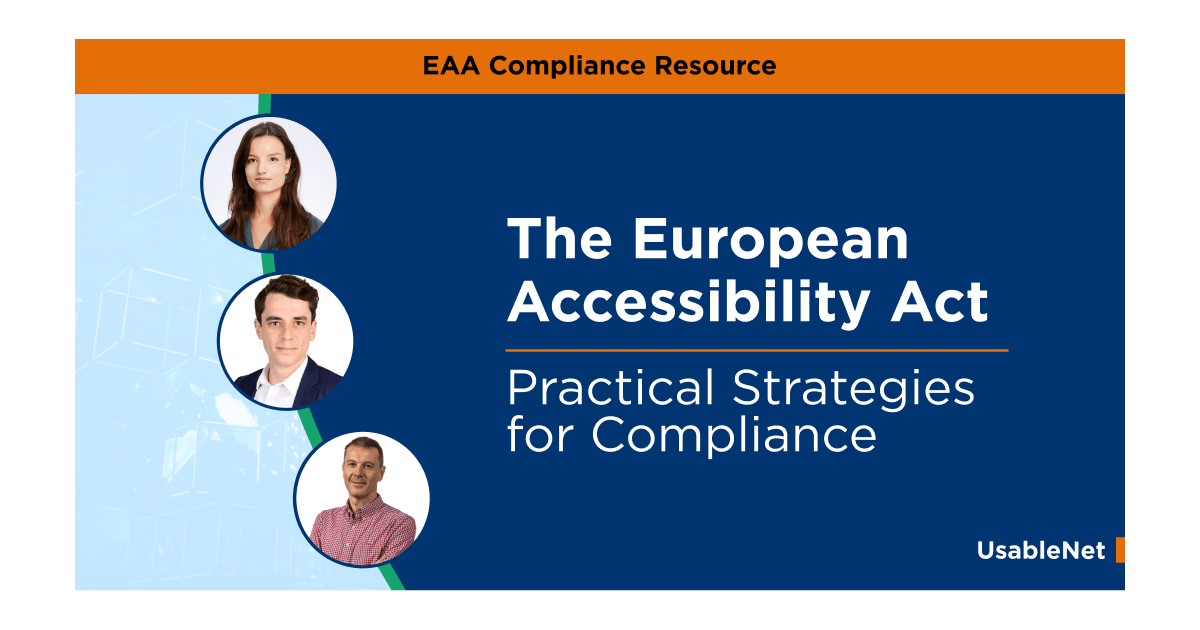In our exclusive UsableNet Webinar, "ADA Website Lawsuits in 2020: Insights and Trends," we dug deep into the facts and trends from our 2019 ADA Website Lawsuit report to gain further insight into the accessibility litigation landscape, and where it’s headed in 2020 and beyond.
The Increasing Number of Lawsuits
Lawsuits over website accessibility have increased exponentially year over year since 2016. In 2016, there were 262 cases. But by 2019, that number had ballooned to 2,235.
Until 2017, the Department of Justice (DOJ) joined many lawsuits on the side of the plaintiff. This helped to establish that websites and apps are subject to the ADA.
The Most Targeted Industries
Several top industries are targeted for ADA website accessibility and inclusion issues. The four most targeted include:
- Retail, with 1,347 lawsuits since 2016
- Food Service, with 202 lawsuits
- Entertainment & Leisure, with 194 lawsuits
- Travel/Hospitality, with 157 lawsuits
The retail industry is a powerful economic engine. We depend on online shopping more than ever before, and because of this, it’s more important than ever that everyone is able to access retail websites.
Why Repeat Suits Happen Frequently
Half of the ADA lawsuits that are filed are large companies and brands that bring in $100 million or more in annual revenue. These companies tend to get hit with repeat lawsuits frequently. It’s incredibly important that companies prioritize accessibility and begin making changes quickly.
Plaintiffs’ firms don’t allow a brand to settle across all brands and apps, so there’s typically a lawsuit for each sub-brand or app. The larger the company, the more likely they’re going to experience multiple ADA lawsuits.
Most Common Lawsuit Claims
Some ADA lawsuit claims are filed more often than others. The most common lawsuit claims we’ve found in our research include:
- Missing text alternatives for non-text content
- Difficulties making a purchase because quantities and sizes aren’t properly displayed
- A sighted user may see location suggestions, click the correct location, but the location isn’t announced to VoiceOver users
- The zip code field provides a full keyboard, not a numeric-only keypad
- Promo ads missing announcements and ad text not accessible to VoiceOver users
- Wrong focus order
- Unlabeled or incorrectly-labeled products with incorrect names on the button
- User is unable to order a product to be picked up in-store
- App elements aren’t labeled or given instructions
- VoiceOver users aren’t notified of pop-up ads on the homepage or buttons without names
- Missing notice by VoiceOver when selecting product colors
What to Do Now
To protect your organization, it’s critical to start taking steps immediately to make your website fully accessible.
Looking for a download to share with your team? We break digital accessibility down into 4 stages. Get our complete, actionable checklist now>>
Short Term
In the short term, it’s important to try to reduce your legal risk. This may be done by:
- Choosing a WCAG standard (2.0 AA is the most common)
- Performing an inventory on your websites, apps, PDFs, and multimedia
- Creating and publishing an Accessibility Statement
- Testing for WCAG
- Performing user testing
- Hiring an accessibility expert
In the medium term, you should focus on remediating sites and apps. Here are some of the basic steps you may need to take:
- Update UX and design with A11Y principles
- Remediate JavaScript, CSS, and HTML Code
- Produce and test new templates
- Integrate A11Y into the release process and testing
Long Term
In the long term, maintain and document the steps you’ve taken to achieve accessibility and keep your website inclusive. Here’s what you may need to do:
- Design and market with A11Y in mind
- Train and enable dev and test
- Manual testing
- Automated testing
- Perform screen reader monitoring on releases
- Conduct annual audits
- Add A11Y to user testing
2020 Predictions
Attention to online accessibility and inclusion is increasing significantly and will continue to do so in 2020. In this article, we detailed our predictions for the year. Here’s a quick recap:
- Accessibility lawsuits at every level will increase
- Fewer corporations will be comfortable simply waiting for accessibility initiatives
- CMS platforms will change to fully accessible templates
- Retail platforms will begin to launch A11Y education resources
- Web agencies will begin taking on A11Y responsibilities
- Major companies will begin hiring experts in A11Y
Overall, we believe the digital world will become more accessible than ever in 2020 and beyond. With the influx of website accessibility lawsuits that have happened--and more coming on the horizon--it’s an issue that organizations will no longer be able to ignore.
To see the full webinar, ADA Website Lawsuits in 2020: Insights and Trends presented by Jason Taylor, click here.












